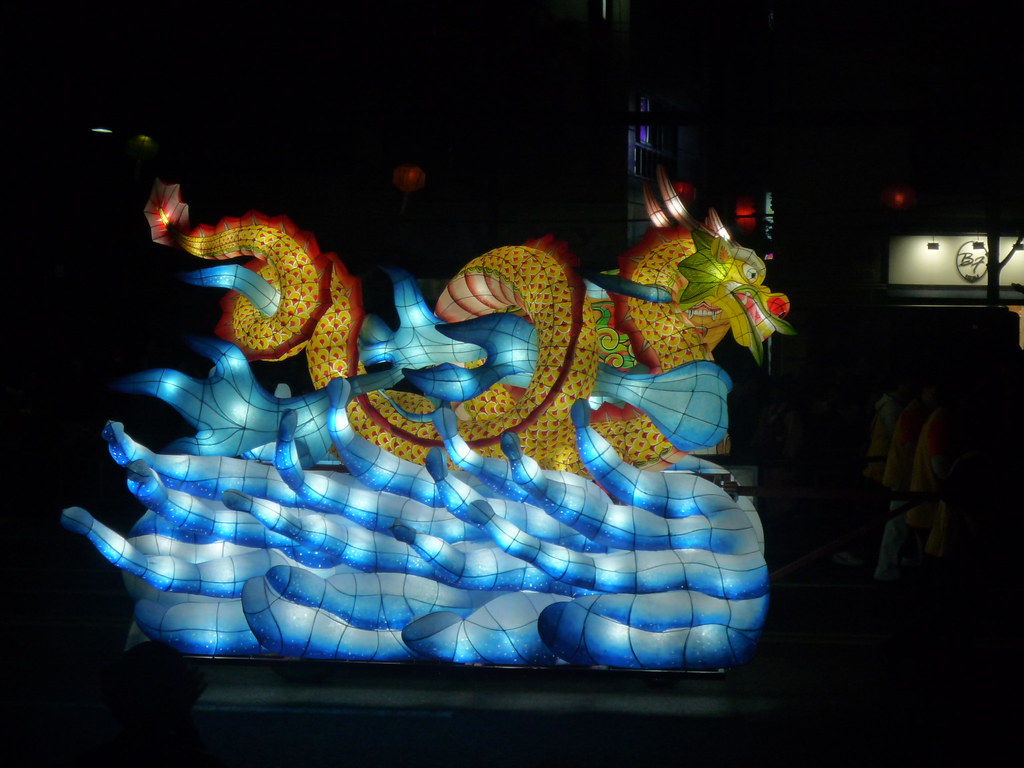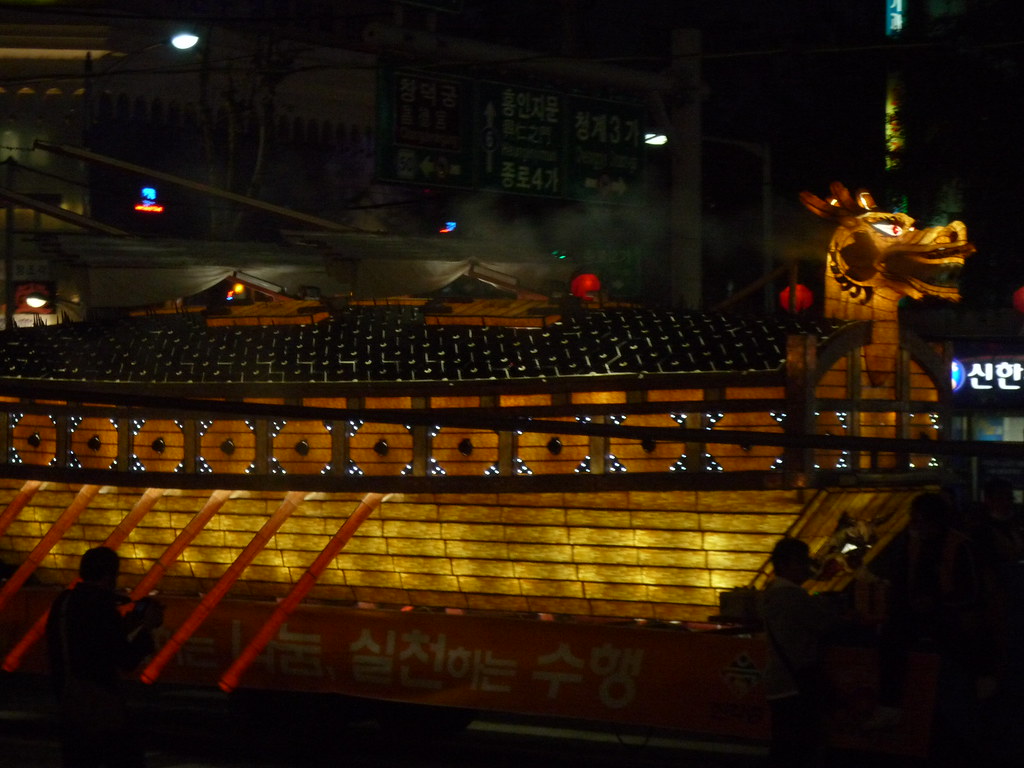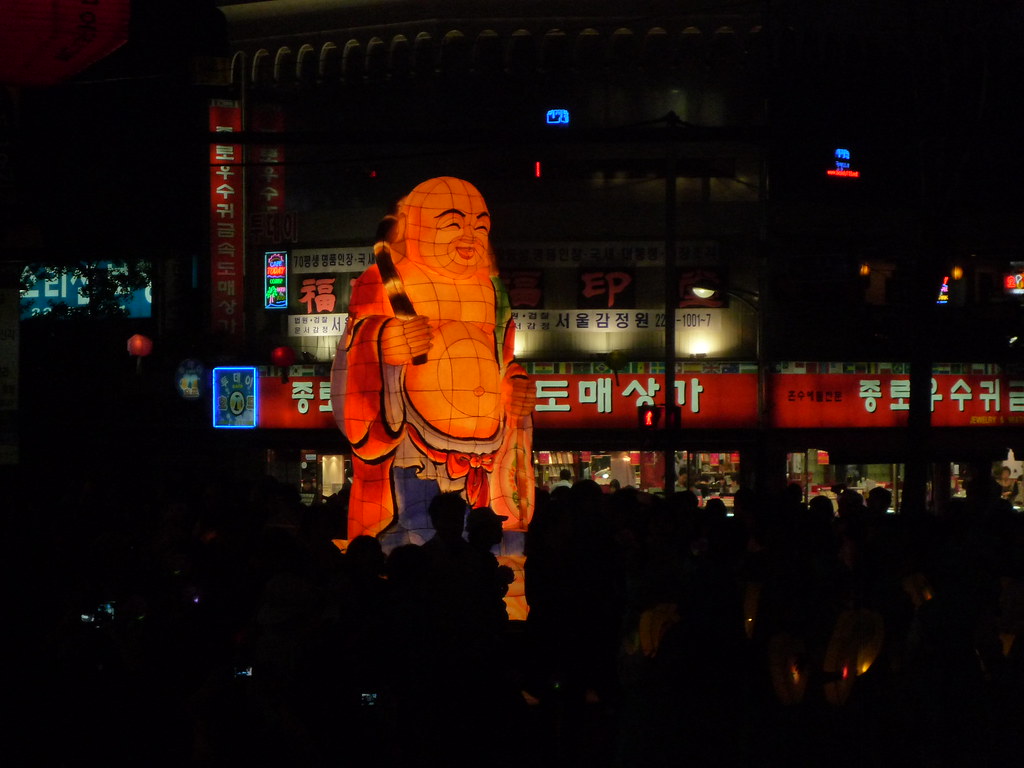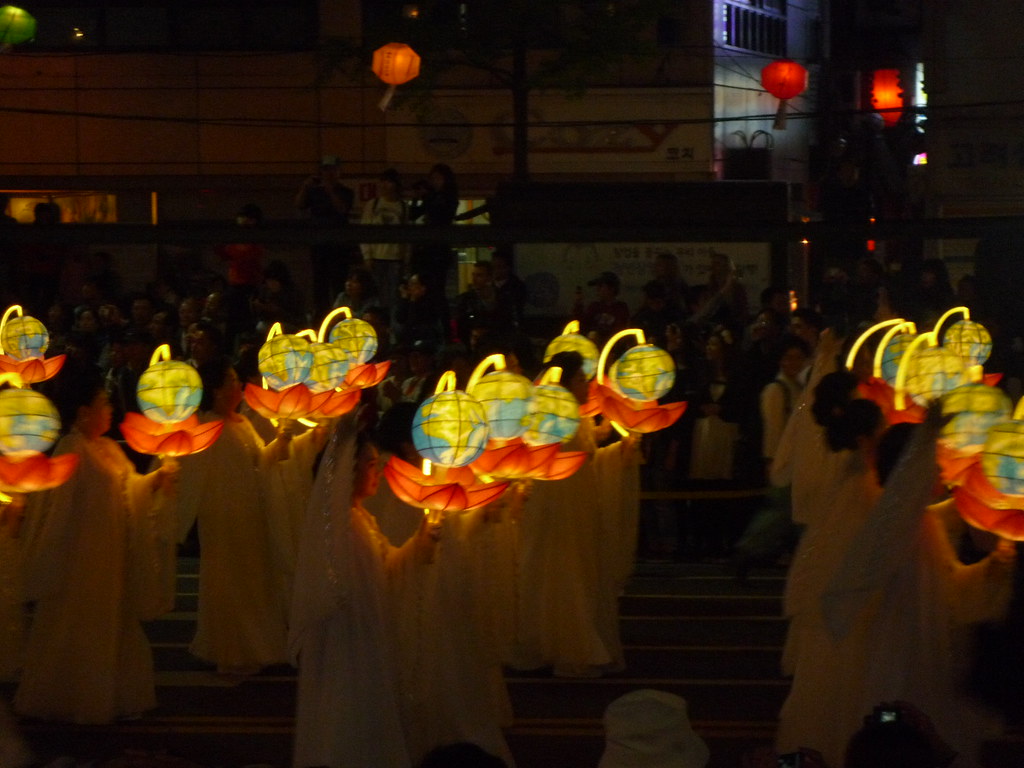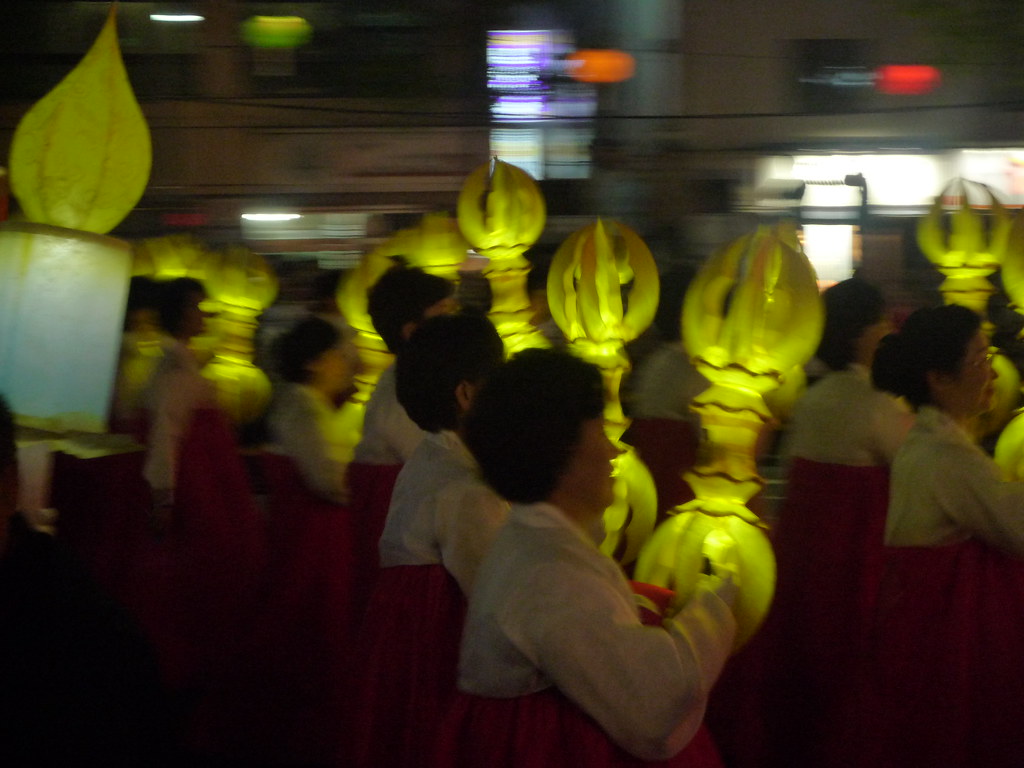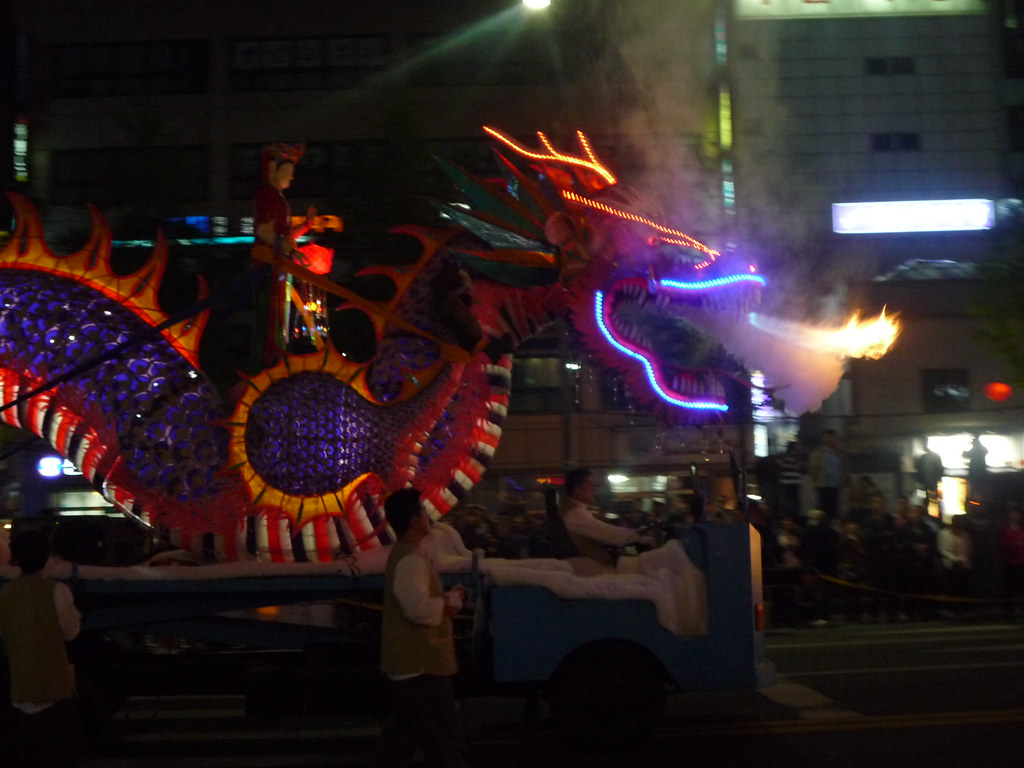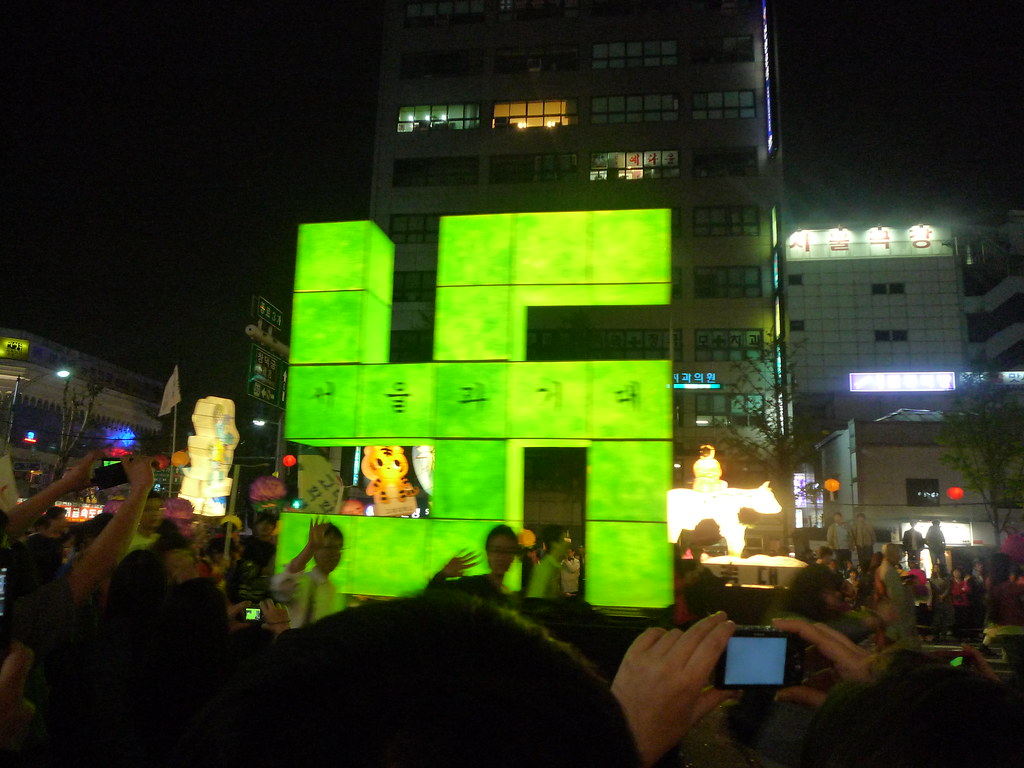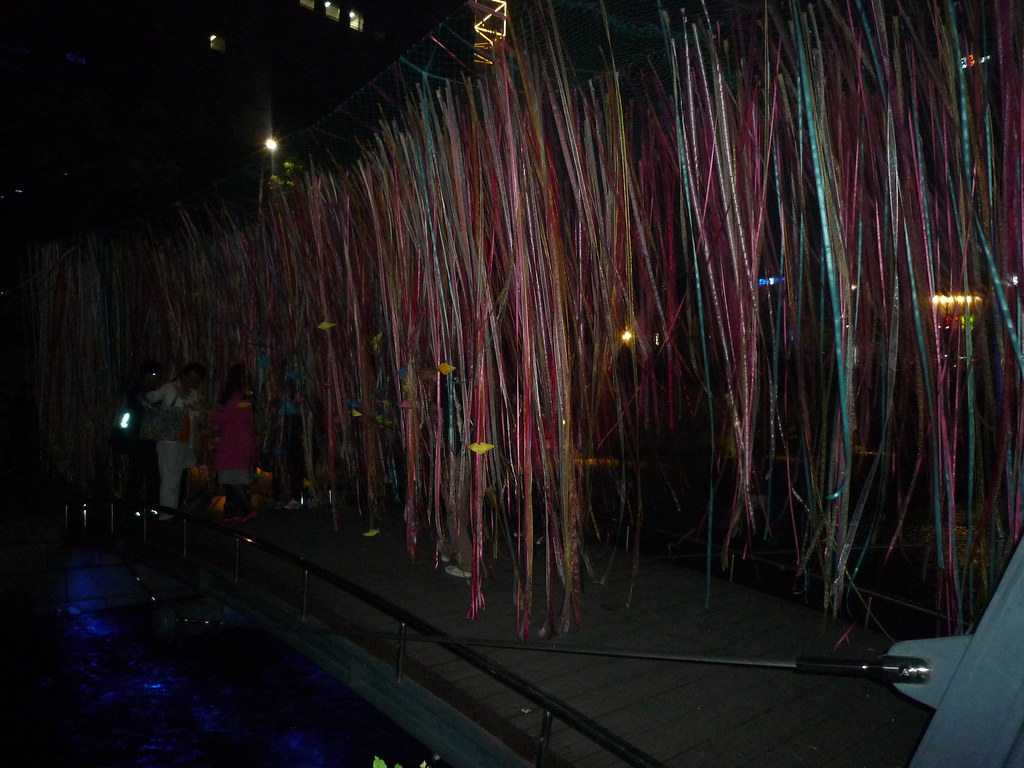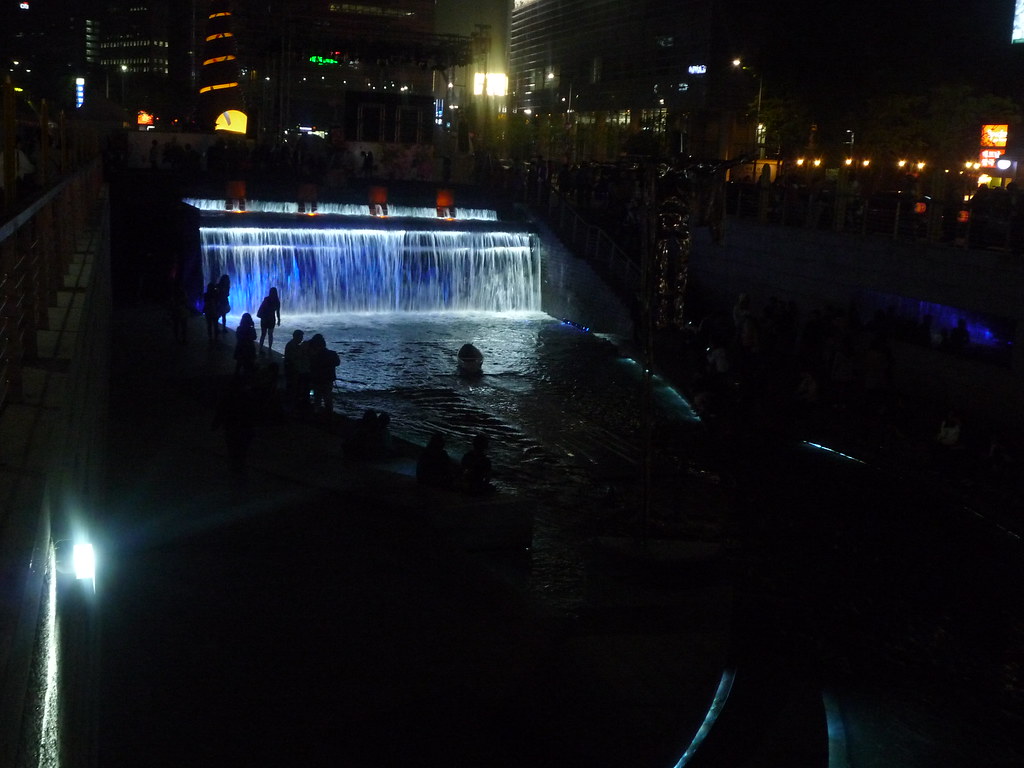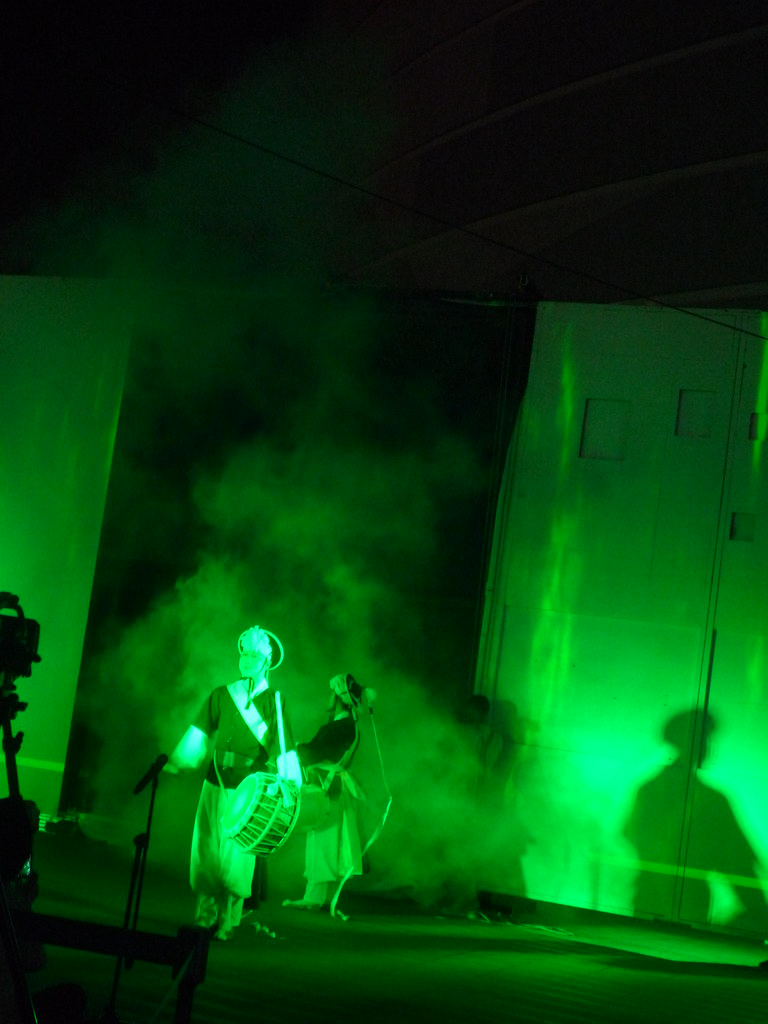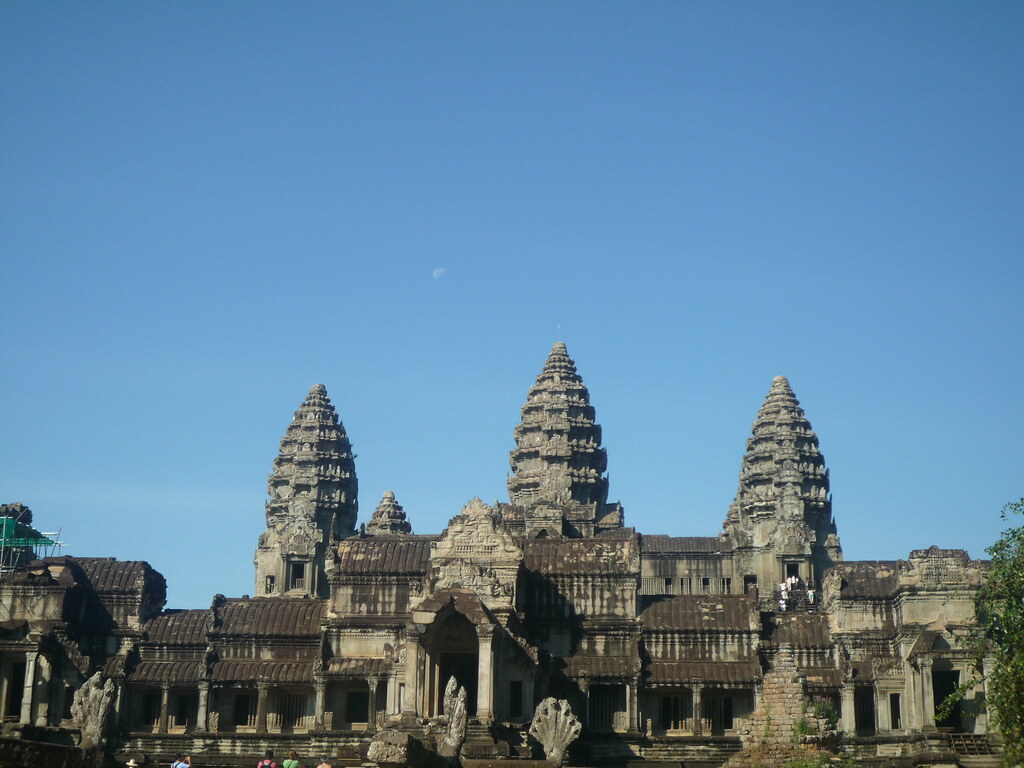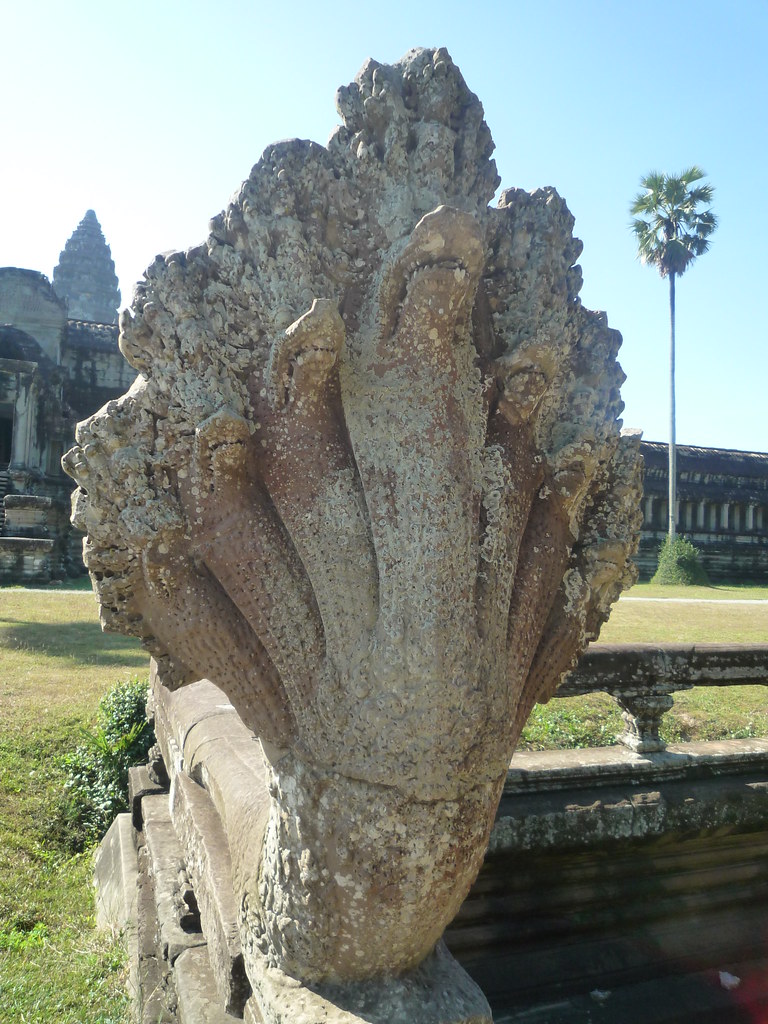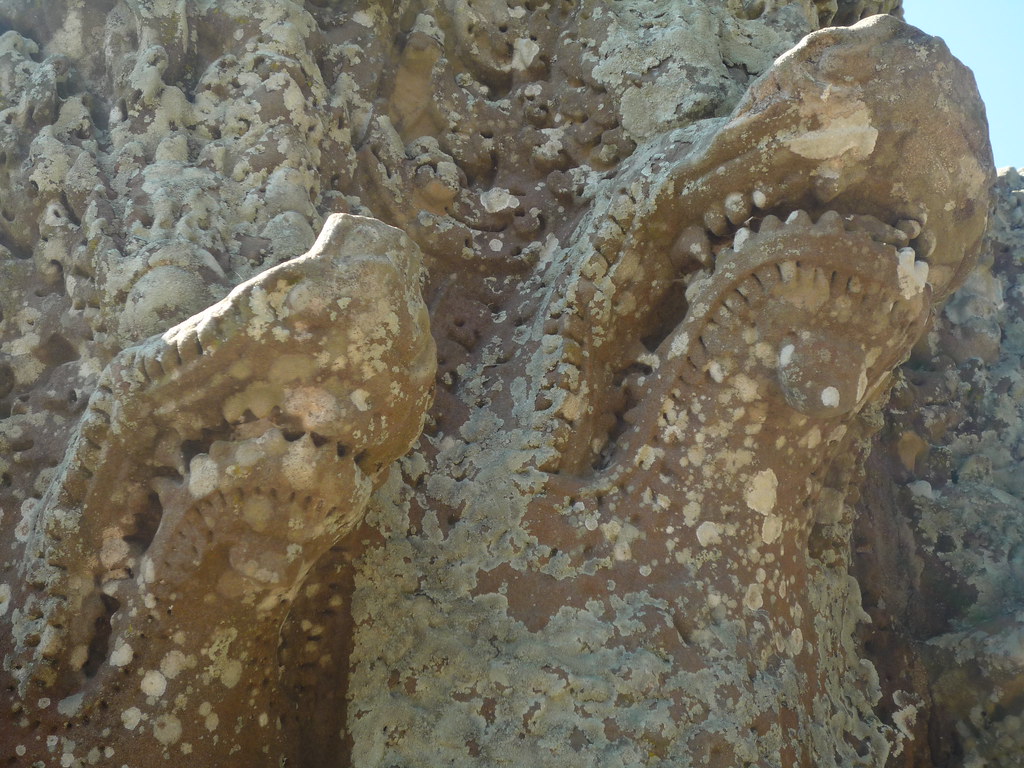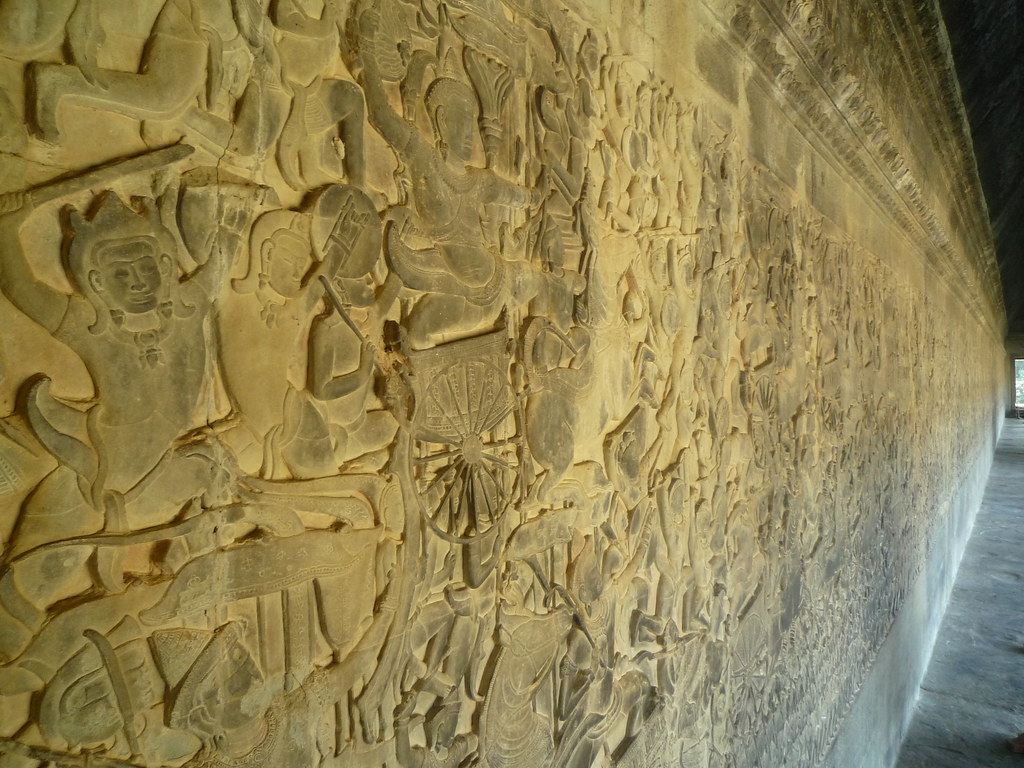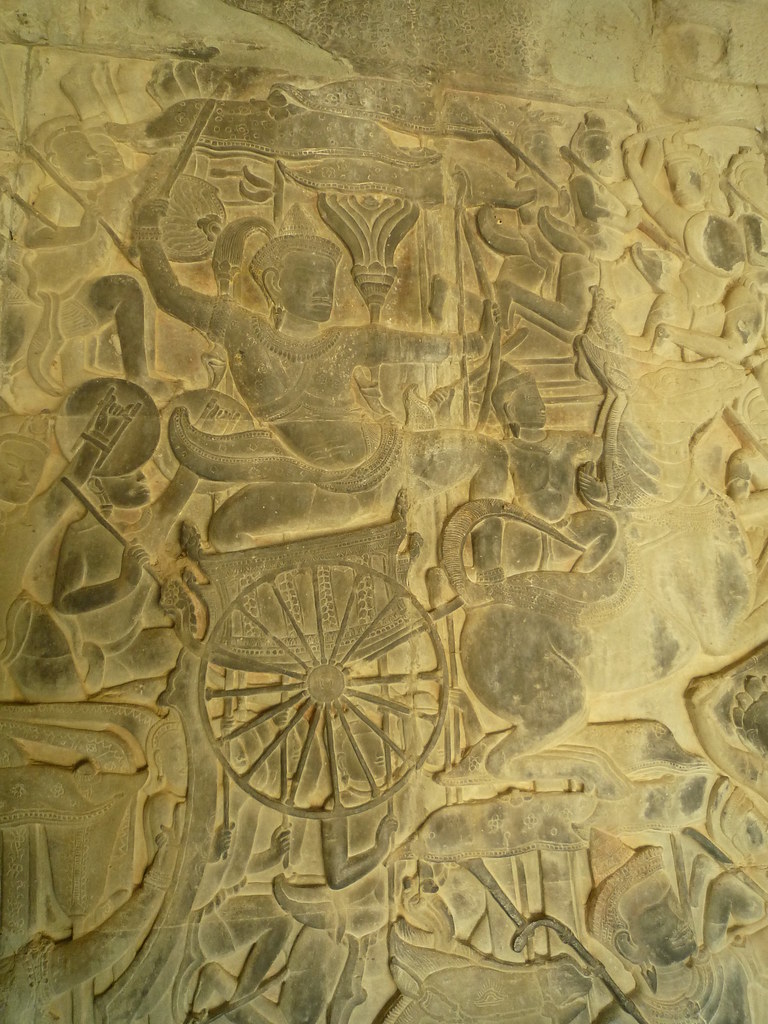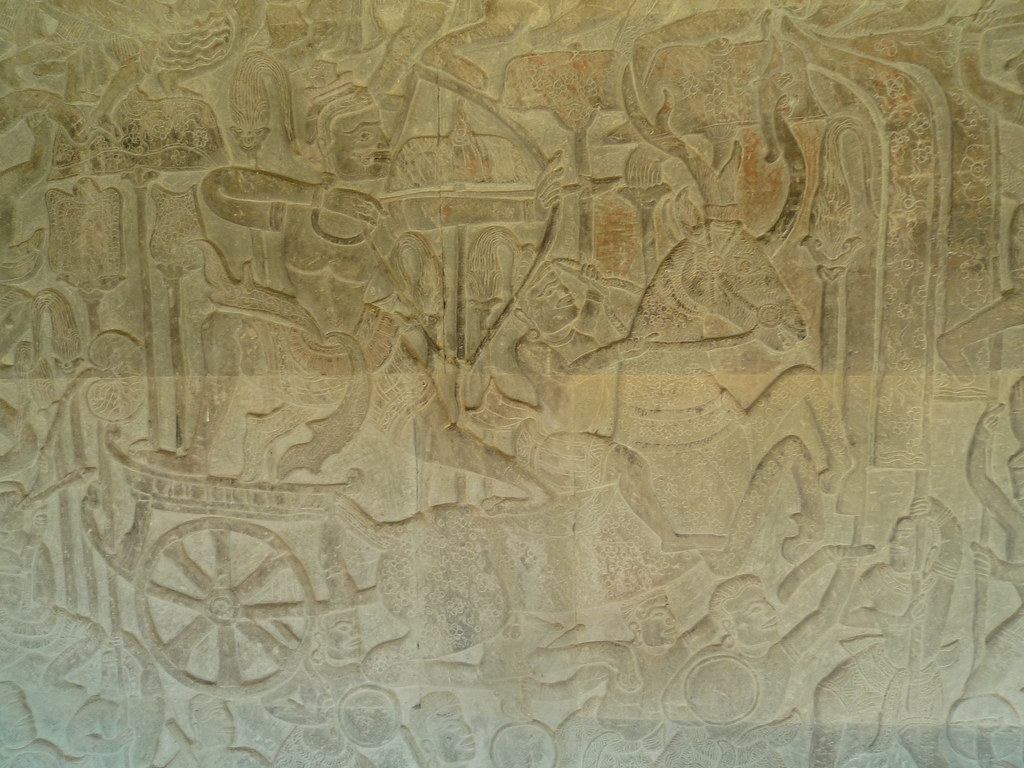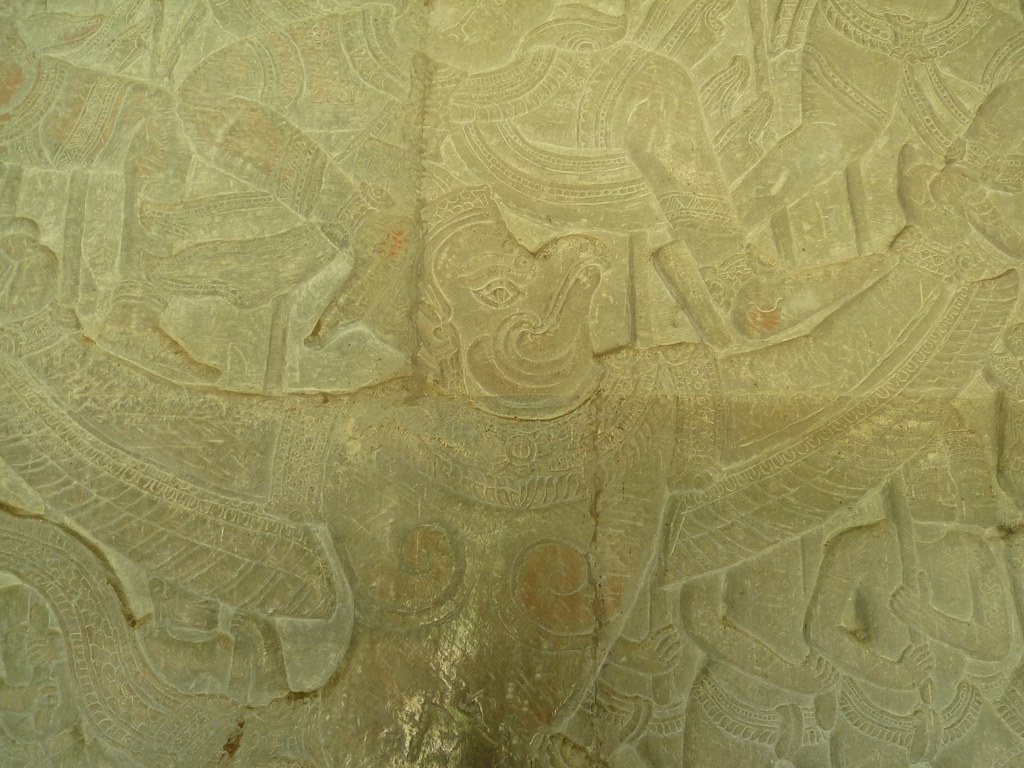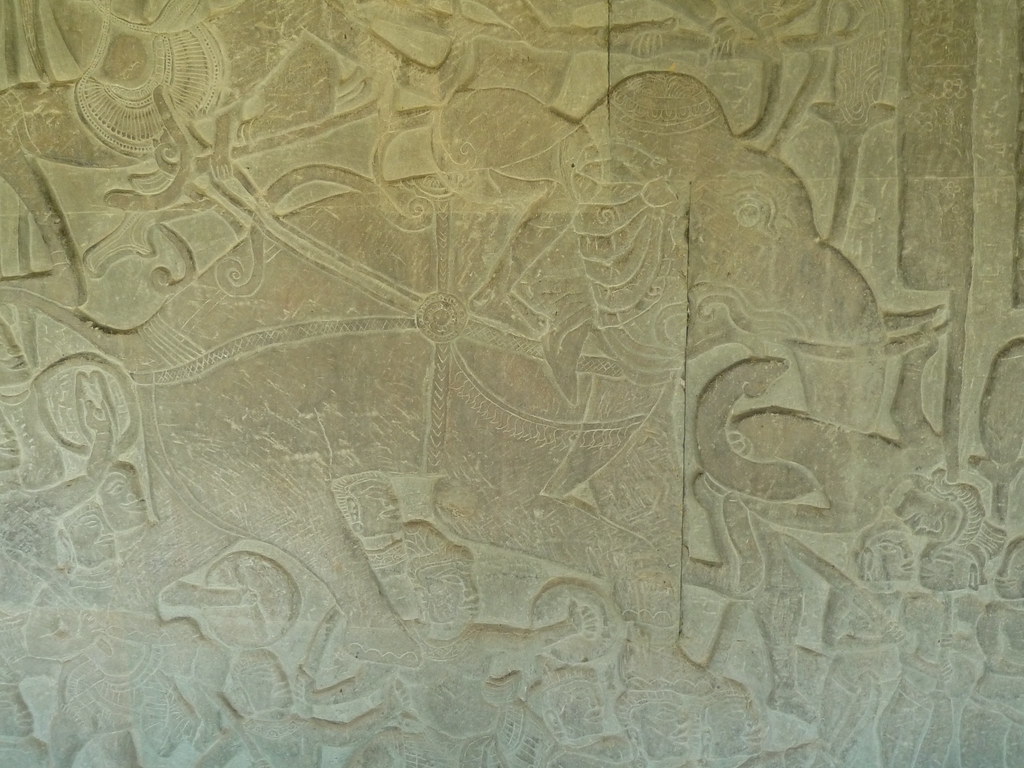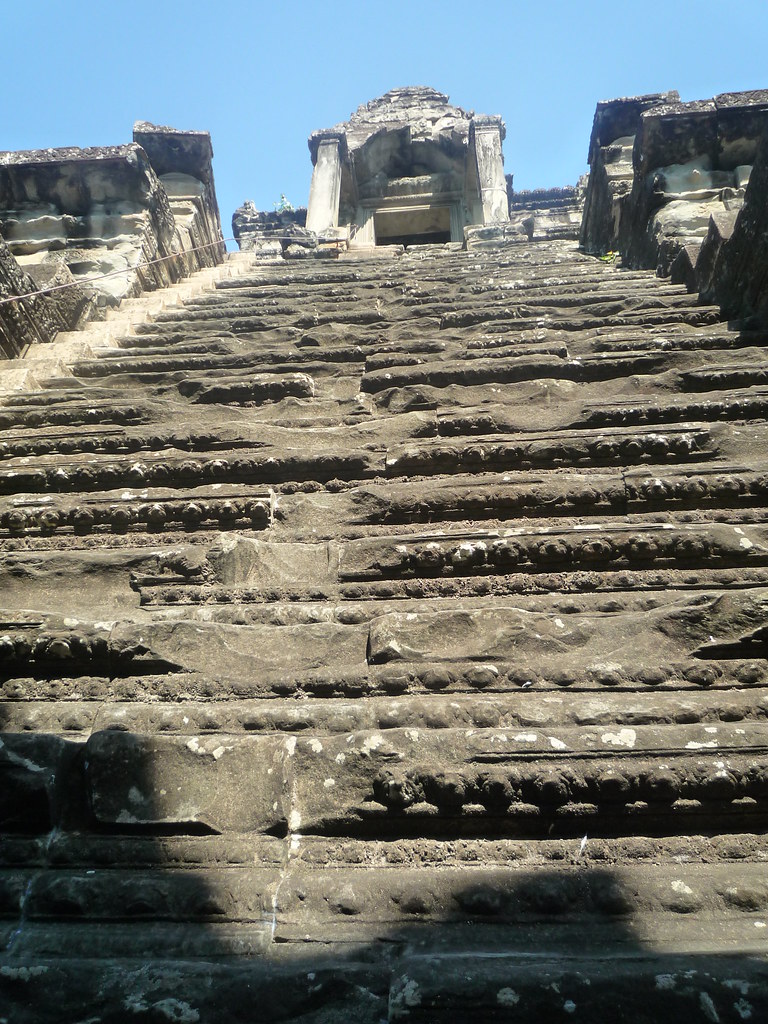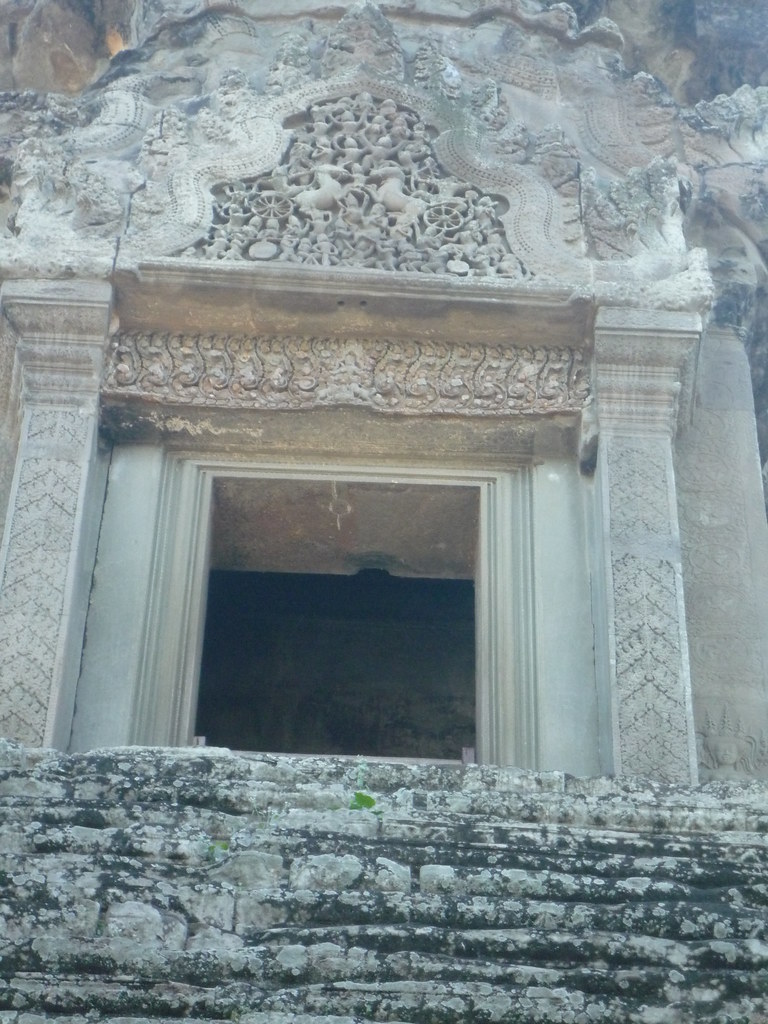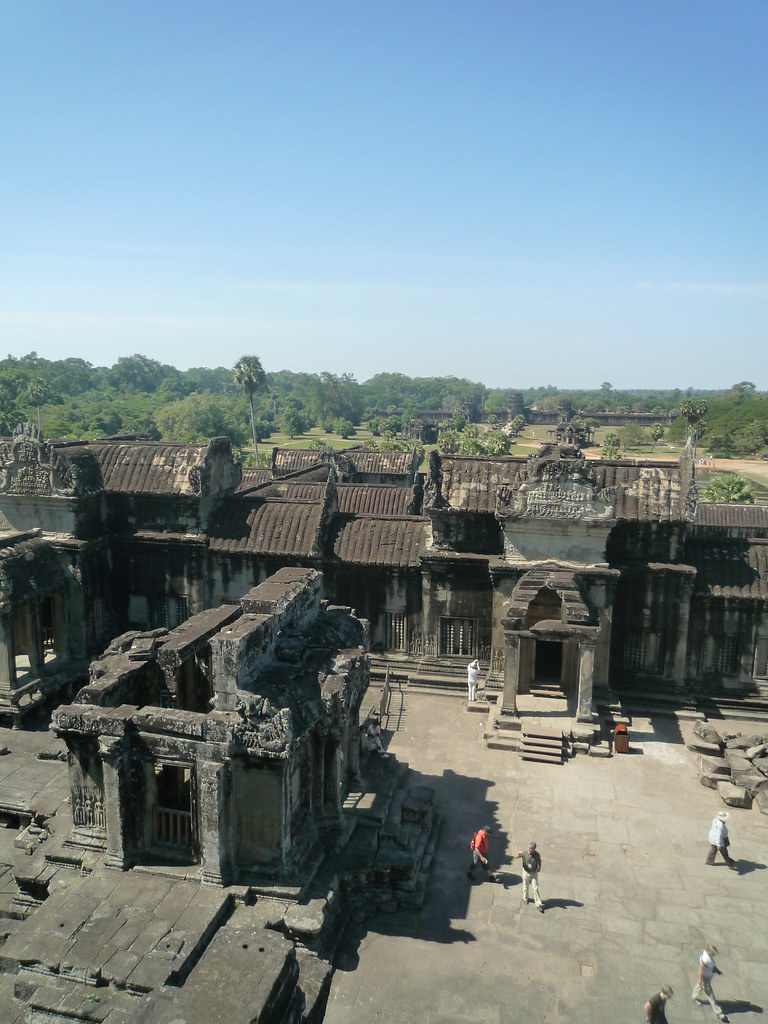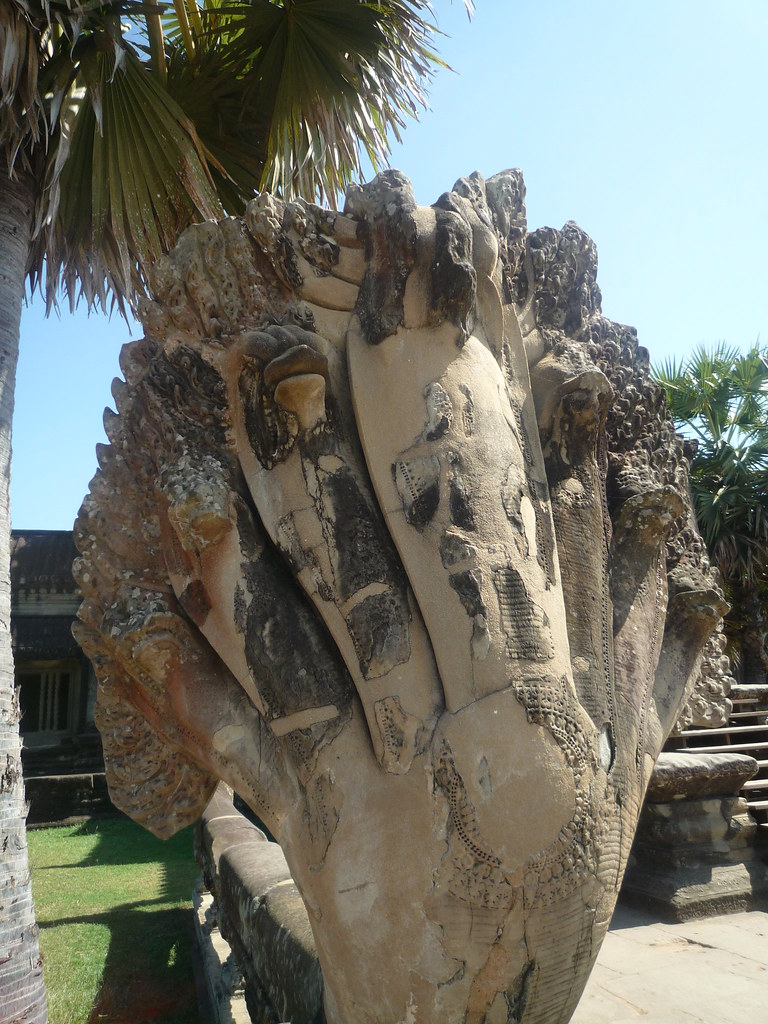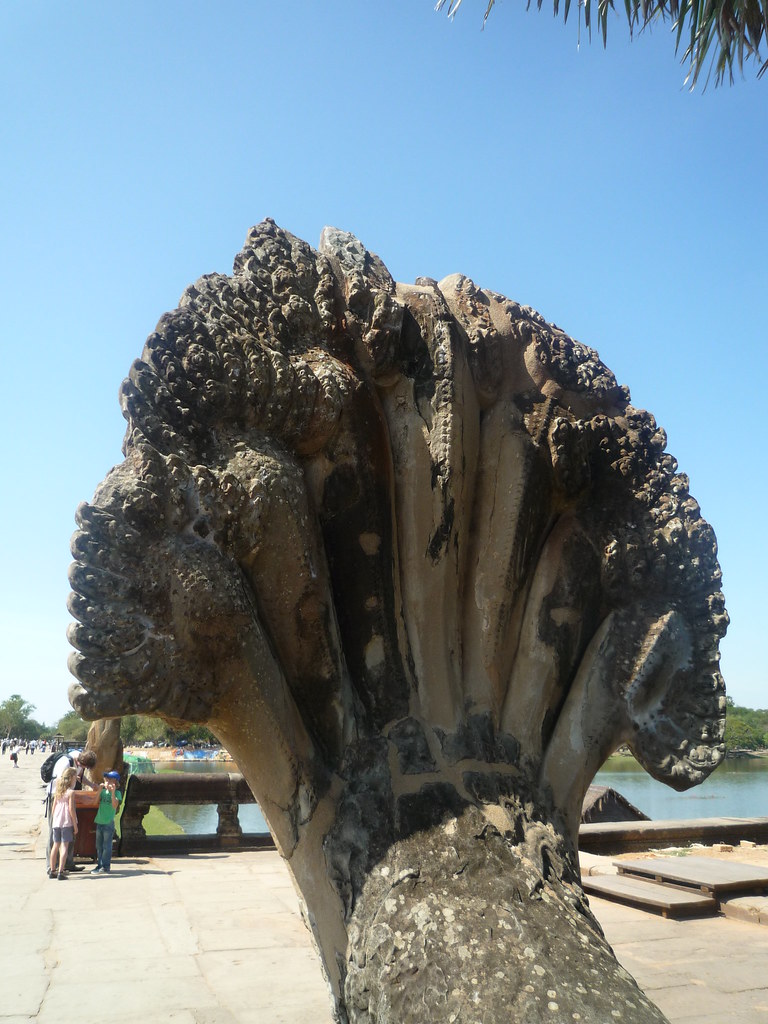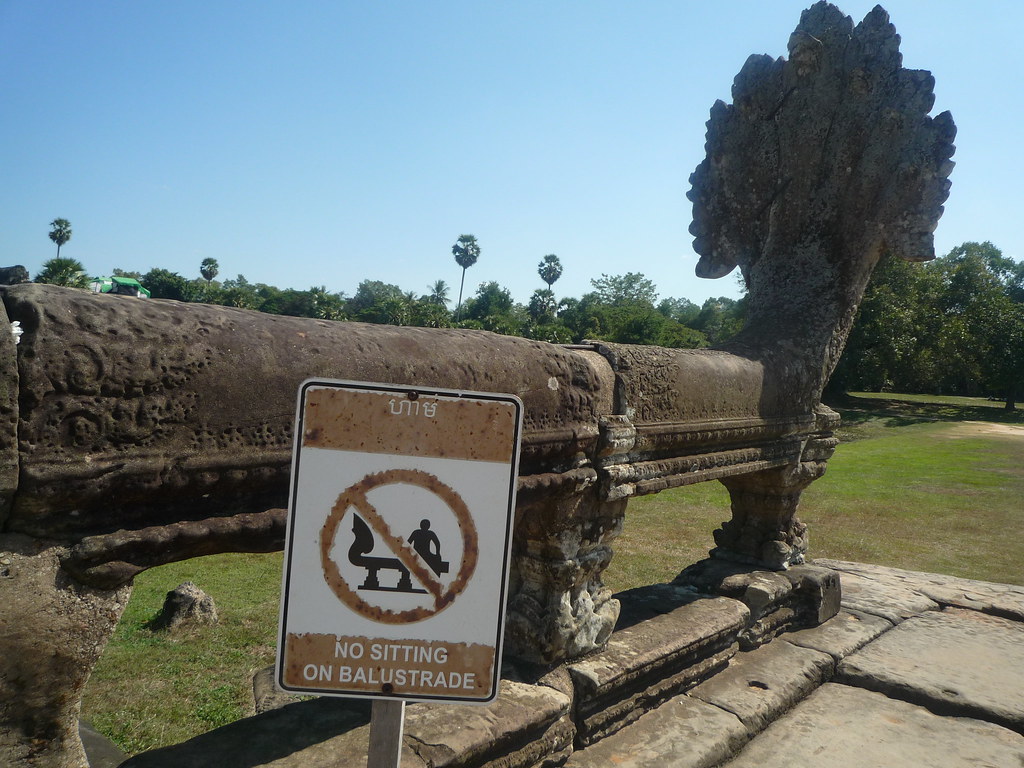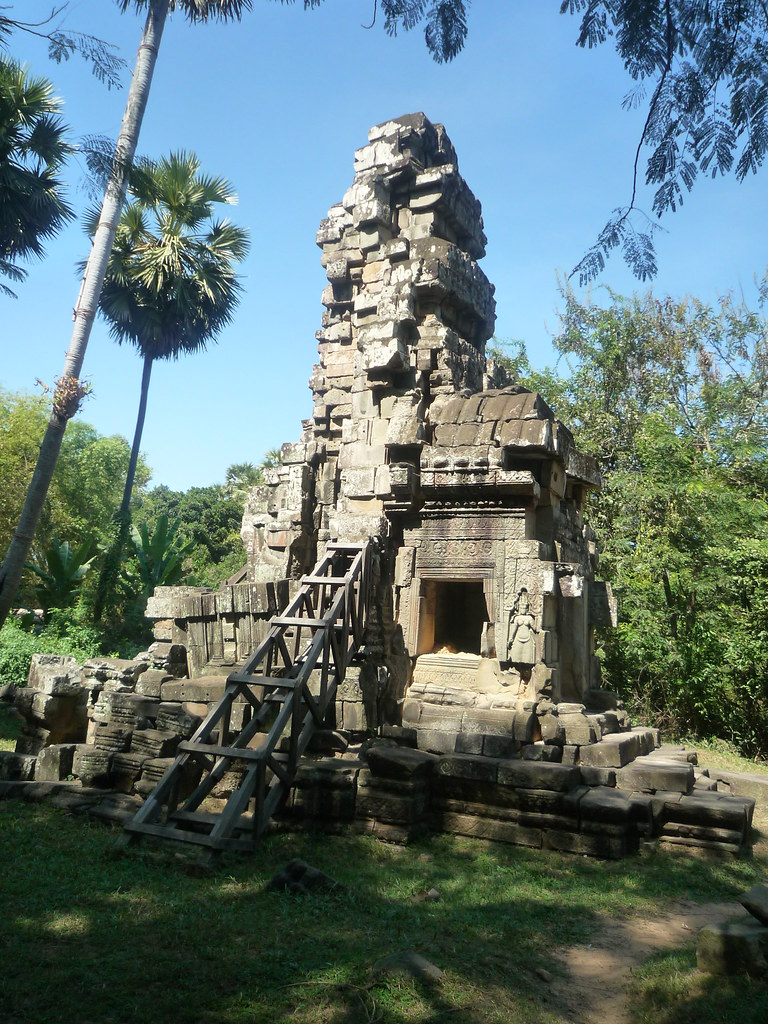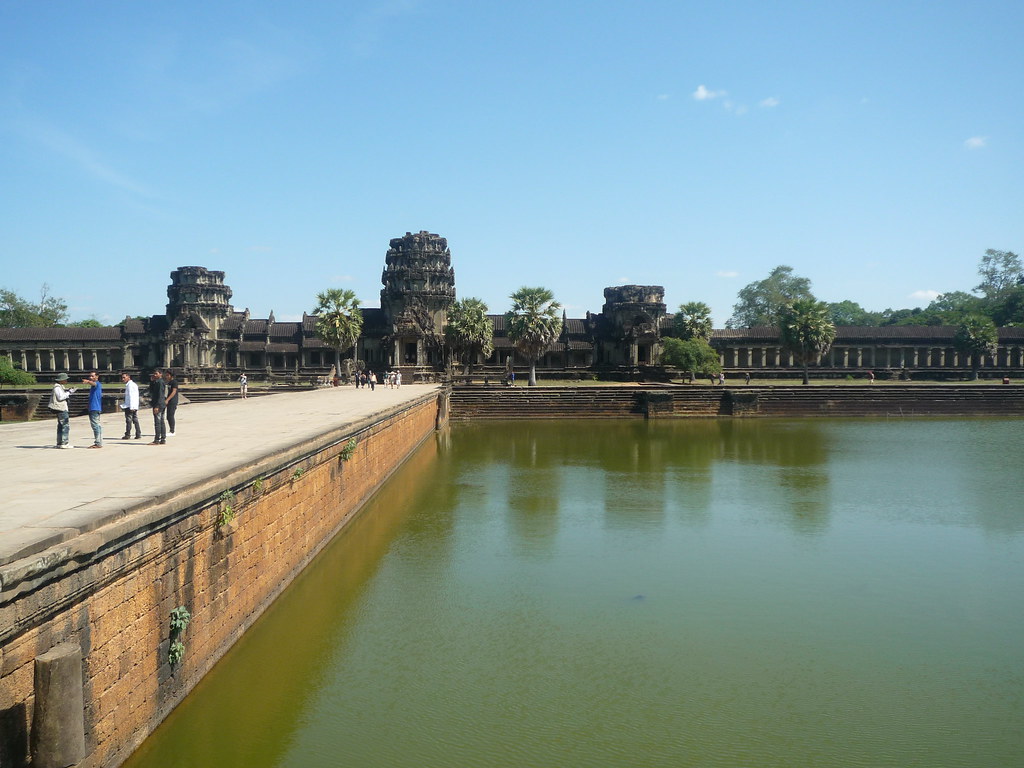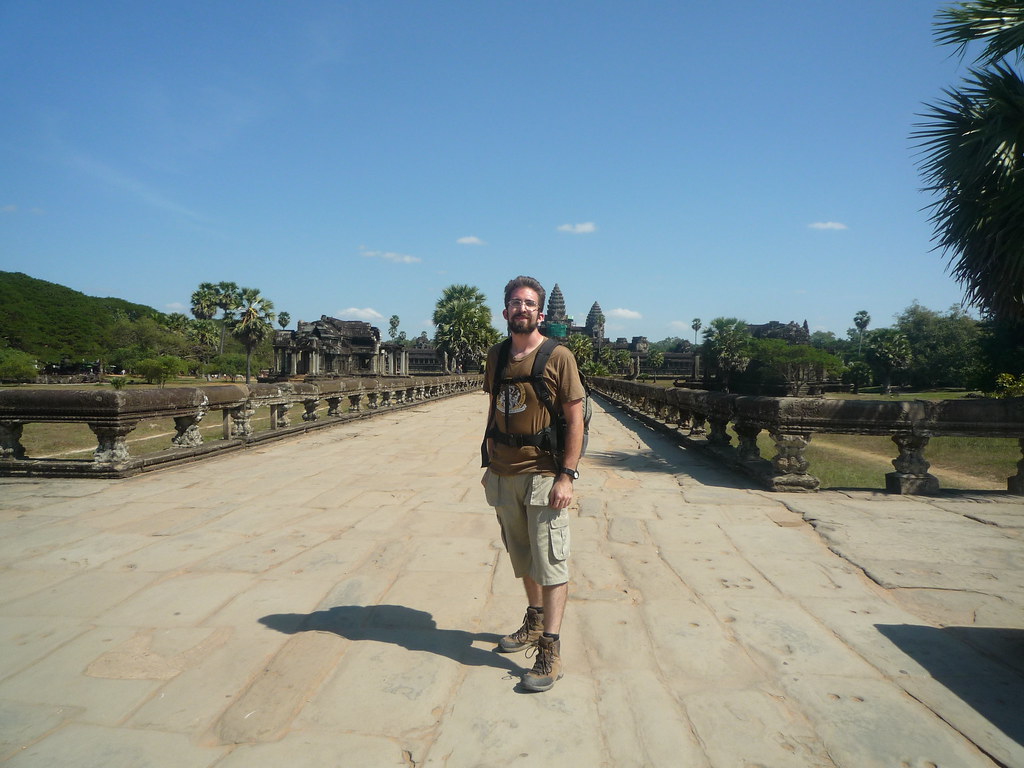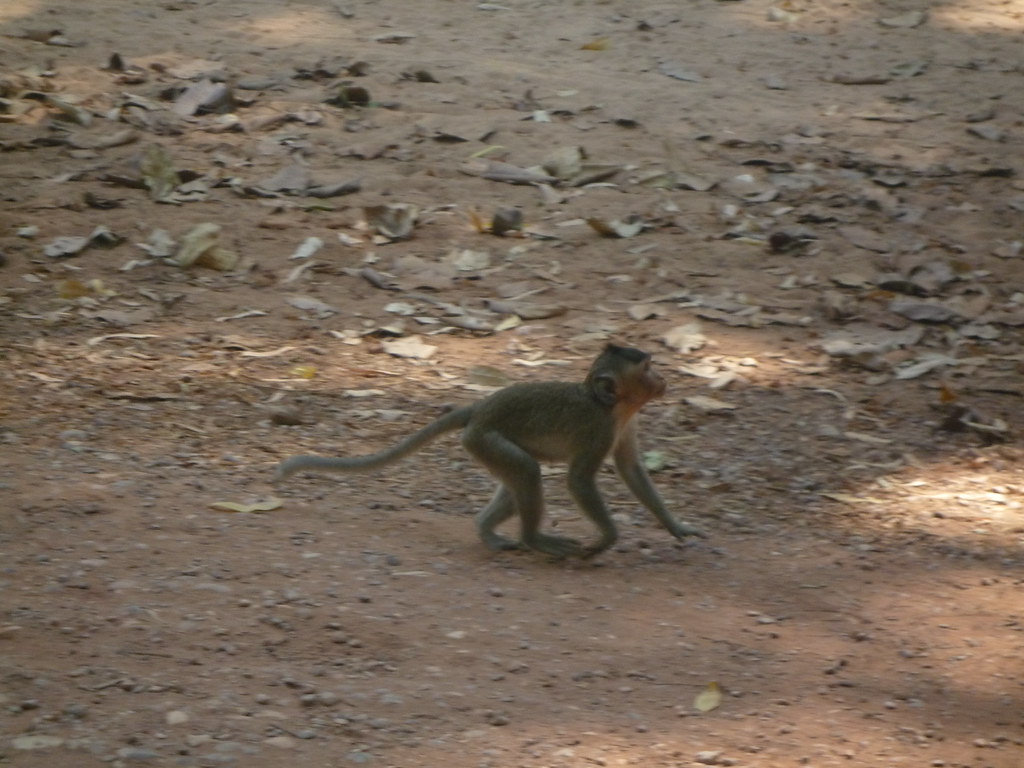Angkor Wat is the main draw of Cambodia, and I'm fairly proud of myself for having the willpower to wait until my second day in country to go see it. I had forced myself to visit the Rolous temple first because they were chronologically earlier, and because I knew they would be a tad of an anti-climax if I saw them after going to Angkor Wat. I was definitely excited to visit the world's largest religious monument. Ever since I first saw a postcard from Dan's brother on the fridge of our house in college I had been determined to visit the incredible temple.
The morning of the big day, I realized that I had forgotten to change my watch to account for the one hour difference between Korea and Cambodia when I tried to go to breakfast at the Butterfly Garden and it wasn't open yet. I instead enjoyed a curry breakfast at the Paper Tiger. Also in the morning I booked a trip to tour a 'floating village' and rented a (somewhat better) bicycle. It was a fairly quick trip out to Angkor Wat, even though I accidentally went in the back entrance. A 190 meter wide moat separated the temple from its surroundings. Across the moat I almost thought I was in the wrong place as I found a smaller stone ruin.


Once through that building, though, I had my first glimpse of Ankgor and all doubts vanished.
The approach to the temple was a hang out spot for monkeys, which were pretty adorable, though I knew better than to get too close.
From the vantage point near the monkeys, the most notable thing about Angkor Wat is its enormity. It is, after all, the largest religious monument in the world.
The imagery of Nagas - mythical multi-headed snakes - was prominent. All of the railings ended in seven headed Nagas, which were worn by centuries of monsoons yet still kept a remarkable amount of detail.
One of the first areas inside was a small comparatively modern Buddhist temple surrounded by what I expect were urns of the most devoted monks. Angkor Wat was built as a Hindu temple (with Khmer flavor) and was taken over by Buddhists. The continuous use is part of why the buildings are so well preserved.
One of the highlights for me was that the entire surfaces of the outer walls were covered in the bas relief friezes that were mostly intact across the entire perimeter.
The pillars supporting the ceiling above the bas-relief corridor were also covered in intricate carvings.
There were not many instances of carved writing, so the few I saw were a vicarious thrill on behalf of archaeologists and historians.
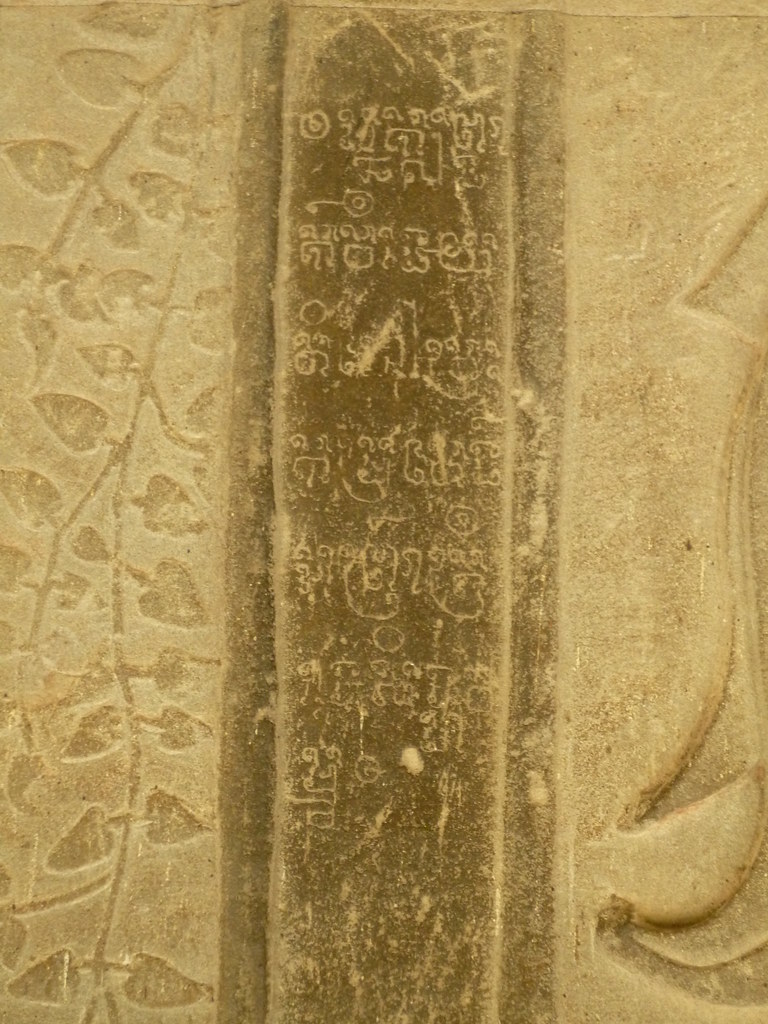
The most famous section of frieze was an entire side of the gargantuan temple that depicted a scene from the story of the Sea of Churning Milk. I actually wish I hadn't heard the intended story depicted by the bas relief since my imagined epic was so much more to my taste. I am glad that historians know the story enough to recognize all of its element, though. The story of the Churning of the Sea of Milk is about the Hindu god Vishnu helping the devas overcome the asuras (demons). The demons had gained control of the world, so the devas pretended to help when really Vishnu planned to make it so that only the devas would benefit. Churning the sea of milk would produce the nectar of immortality, which Vishnu aided the devas to keep for themselves instead of it being split evenly with the demons as agreed. A great mountain was used as the churning rod, and a great serpent was used as a churning rope. I have no idea what the Khmer churned or what that process was like, but apparently it involved wrapping a rope around a rod and pulling back and forth on the rope to make the the rod spin. This story was clearly a familiar chore writ large. I personally prefer stories of gods transcending the mundane to live exciting lives, not them doing mundane things on a grand scale. However, the entire story - the characters' motives, the cosmology, and the consequences - are utterly alien to me, as I expect any story of incredibly powerful entities would be. Vishnu took the form of a turtle and supported the mountain on his back.

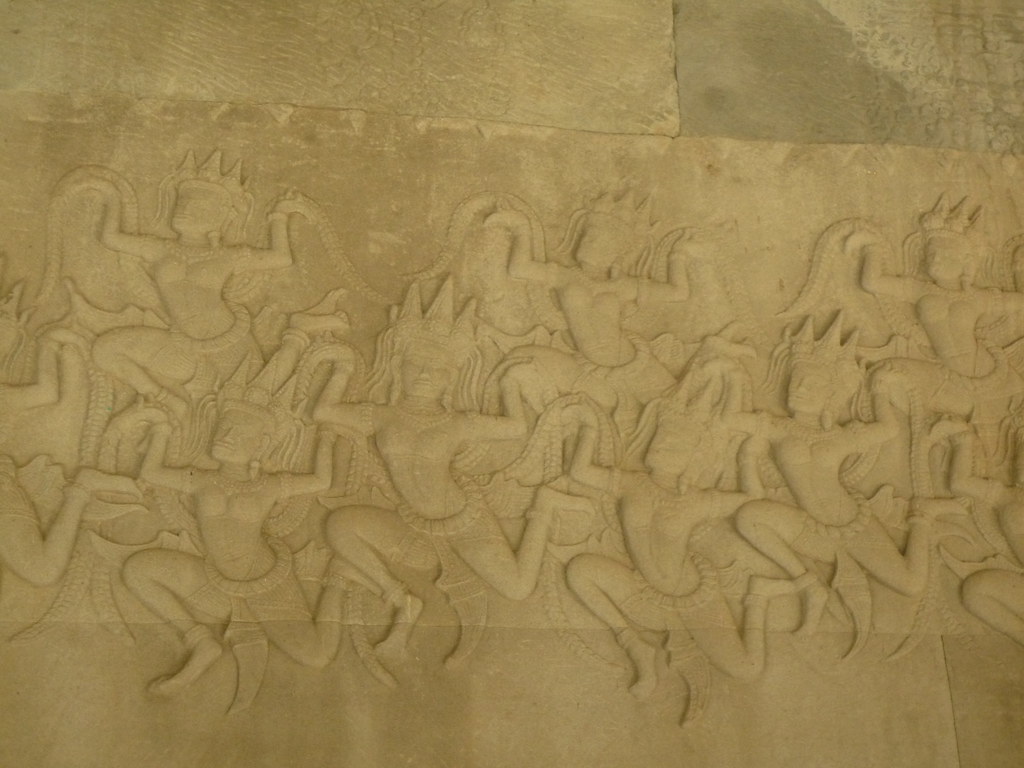


Almost half of this giant frieze was obscured by scaffolding. I had to detour around the restoration, and in the process kept staring at an oddly shaped stacked-stone cone which was unlabeled and unexplained.
Back inside, I viewed other areas of the bas-relief frieze that portrayed various processions and battles. I particularly enjoyed the depictions of mythical creatures.
Real animals depicted as beasts of war were also fascinating.
The oil of our skin stains stone, so it can be amusingly obvious which parts of which statues hundreds of people have touched. The devas were popular.
The inner areas exhibited their ornateness more in the architecture, though carvings were still present.
Buddhist statues and shrines filled some of the alcoves. These artworks postdated the building by quite some time, but were hardly new.
The innermost and highest courtyard was another highlight. Intricate yet ancient towers rose to impressive heights and were only reachable by dangerously steep stairs.
The views of the jungle from the top were remarkable as well.
Despite my spectacular surroundings, I found mysteriously underwhelmed. I guess I had built it up too much or myself since the temple was amazing, just not quite as awe inspiring as I had imagined. I think a major element of it was that I hadn't realize that the temple was Hindu. I had thought it would be dedicated to a dead religion that I knew nothing about, so the semi-familiar stories, names, and iconography were not nearly as exciting as a total unknown would have been. I also think I was feeling claustrophobic as the day wore on and more and more tourists filled the central area.
After climbing the precarious steps to the top and back down, I exited through the front main entrance. Along the way, I investigated some outbuildings, marveled at the fact that there were even more Nagas in front of the temple than there were in the back, and enjoyed some of the signs.
Outside the main gate, I enjoyed some roasted pork and several skewers of roasted chicken that had an incredible marinade. I wandered through the small - comparatively humble yet still quite interestingly decayed - ruins on the other side of the street before wading back through Angkor Wat.
I stopped to take the obligatory pictures from the building's grand front entrance.
I also paused to watch the monkeys again at the same spot on my way out.
I recrossed the moat, retrieved my bicycle, and continued on to the rest of the colossal temple complex.
Believe it or not, I took lots more pictures, which can be found
here.



